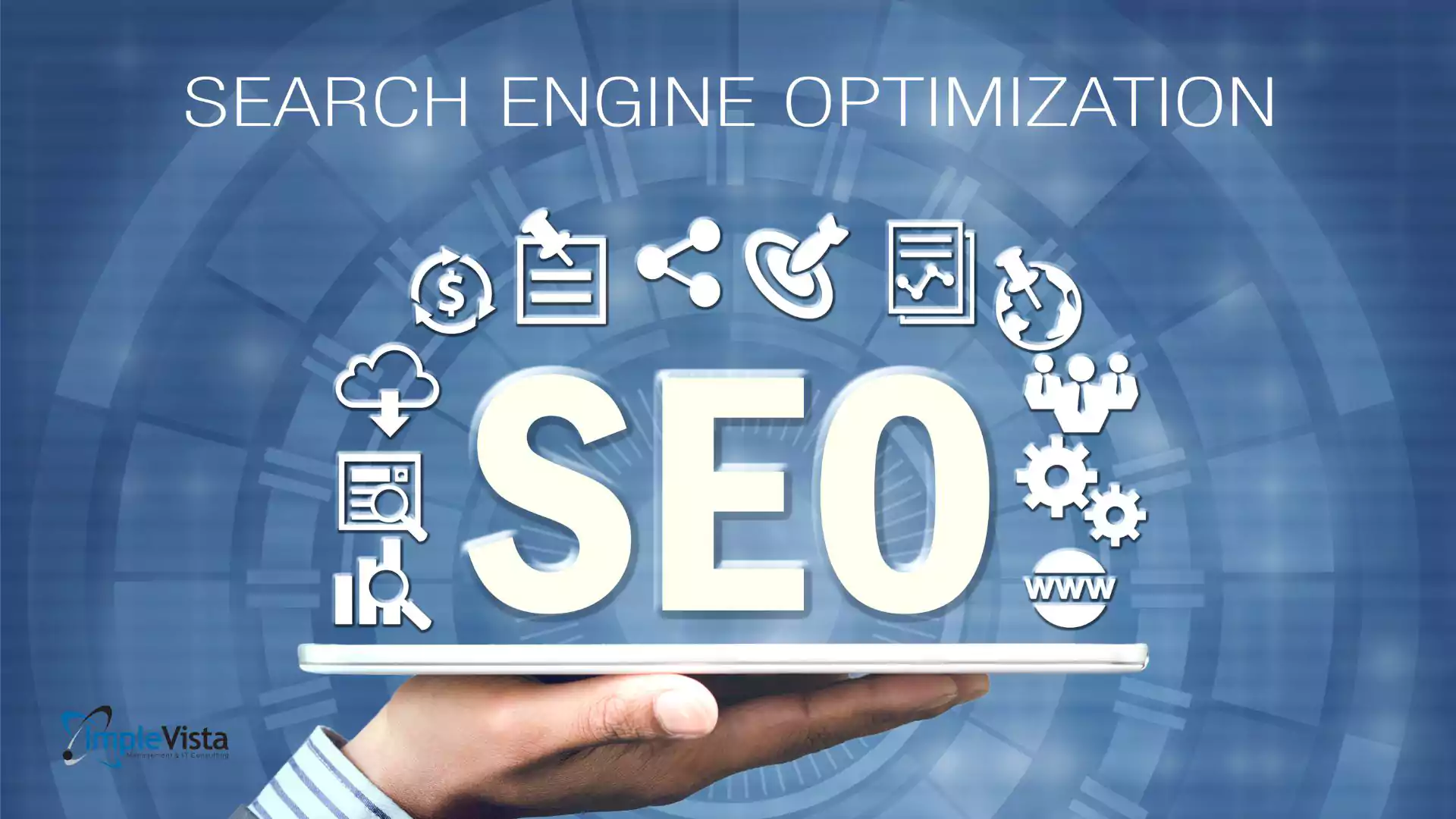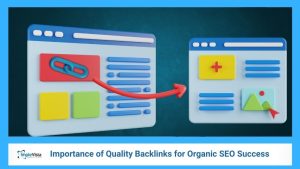The evolution of SEO has seen many algorithm updates, but few have been as focused on user experience as Google’s Page Experience update. Introduced to improve web usability, this update emphasizes elements such as site speed, responsiveness, and overall user interaction. For businesses looking to enhance their online presence, focusing on Page Experience is no longer optional—it’s essential.
Digital Implevista, a leading digital marketing service provider in Dhaka, Bangladesh, specializes in improving page experience to boost SEO rankings. By targeting key factors like Core Web Vitals, page load speed, and interactivity, they help clients stay ahead of the competition. This article dives into the critical elements of Page Experience and how Digital Implevista can optimize it to improve SEO performance.
What is Page Experience SEO?
Page Experience SEO focuses on the elements of a webpage that contribute to user satisfaction, as outlined in Google’s Page Experience update. These factors include mobile usability, HTTPS security, and the elimination of intrusive pop-ups, but the most important components are Core Web Vitals.
Core Web Vitals measure real-world user experience on key metrics:
- Largest Contentful Paint (LCP): Measures loading performance. A good LCP should occur within 2.5 seconds of the page loading.
- First Input Delay (FID): Measures interactivity. A good FID should be less than 100 milliseconds.
- Cumulative Layout Shift (CLS): Measures visual stability. A good CLS score should be less than 0.1.
The Role of the Google Page Experience Update
The Google Page Experience update is a ranking signal that integrates several user experience metrics, including Core Web Vitals. The update prioritizes sites that offer a superior browsing experience, leading to better engagement and higher organic search rankings. Poor page experience, on the other hand, can result in lower rankings even if a site has good content.
At Digital Implevista, we understand the importance of this update for businesses targeting organic growth. Our strategy focuses on optimizing these critical factors to ensure that your site not only ranks well but also provides a smooth and enjoyable experience for users.
Key Aspects of Page Experience Optimization by Digital Implevista
1. Improving Core Web Vitals
At the heart of the Page Experience update are Core Web Vitals, which measure the loading, interactivity, and visual stability of your website. Digital Implevista employs several techniques to improve these key metrics:
- Optimizing images to reduce file sizes and improve loading speed, addressing the Largest Contentful Paint (LCP) metric.
- Minimizing JavaScript execution to ensure users can interact with the site as quickly as possible, improving First Input Delay (FID).
- Stabilizing content layout to prevent unexpected shifts in page elements, thereby improving Cumulative Layout Shift (CLS).
By focusing on these Core Web Vitals, we ensure your site provides a top-tier user experience.
2. Mobile Usability
In today’s mobile-first world, having a mobile-friendly website is essential. The Google Page Experience update places a heavy emphasis on mobile usability, ensuring websites are easy to navigate on small screens. Digital Implevista focuses on:
- Responsive design, ensuring your site adapts seamlessly across different devices.
- Streamlining mobile navigation to improve user experience and prevent high bounce rates.
- Improving mobile load speed to align with Core Web Vitals, especially LCP and FID.
3. Security with HTTPS
Google rewards secure websites that protect user data, with HTTPS being a key signal in the Page Experience update. Digital Implevista ensures that your website is fully secure by implementing HTTPS protocols, which help build trust with users and signal to Google that your site is safe.
4. Minimizing Intrusive Interstitials
Pop-ups and intrusive ads can disrupt the user experience and negatively affect rankings. Digital Implevista helps ensure that your site minimizes these disruptive elements, allowing users to engage with your content without unnecessary distractions.
SEO Benefits of Improving Page Experience
Improving your website’s Page Experience not only aligns with Google’s ranking factors but also enhances overall engagement. A site that loads quickly, is easy to navigate, and offers a stable user experience will retain visitors for longer, leading to reduced bounce rates and increased conversions.
Digital Implevista’s approach to Page Experience SEO focuses on creating websites that perform well across all devices and deliver a seamless experience, which ultimately results in higher rankings and better engagement.
Understanding the Importance of Page Experience for SEO Success
In the constantly evolving world of search engine optimization (SEO), it’s no longer enough to just focus on keywords and backlinks. Today, the user’s experience on your website plays a pivotal role in determining how well your pages rank on search engines. One of the most significant shifts in this landscape is Google’s Page Experience update, which prioritizes websites that provide an optimal user experience.
This article explores what Page Experience entails, its components, and how it influences SEO rankings. It will also provide strategies to optimize your website for better user satisfaction and search performance.
What is Page Experience?
Page Experience is a set of signals that measure how users perceive the interaction with a website beyond the content. These signals include Core Web Vitals, mobile usability, HTTPS security, and adherence to safe browsing practices. Together, these factors help determine whether users have a positive, smooth experience while visiting a site. Sites that deliver a better experience are more likely to rank higher on search engine result pages (SERPs), while sites with poor user experiences could see a decline in visibility.
Core Web Vitals: The Foundation of Page Experience
At the core of Google’s Page Experience update are the Core Web Vitals—a set of metrics designed to measure key aspects of the user experience, including loading speed, interactivity, and visual stability.
- Largest Contentful Paint (LCP)
LCP measures the loading performance of a webpage, specifically how long it takes for the largest content element (such as an image or block of text) to load. A good LCP score is anything below 2.5 seconds. Sites that load faster offer a more satisfying experience, and thus, rank higher. - First Input Delay (FID)
FID gauges the time it takes for a webpage to become interactive—specifically, how long it takes for the browser to respond to the user’s first interaction (such as clicking a link or button). A responsive FID score is below 100 milliseconds, ensuring users can interact with your site without delays. - Cumulative Layout Shift (CLS)
CLS measures the visual stability of a webpage by tracking how much the layout shifts as it loads. A low CLS score of under 0.1 ensures that users do not experience unexpected layout shifts, which can be frustrating.
Mobile-Friendliness: A Crucial Element of Page Experience
With the majority of internet traffic now originating from mobile devices, Google places significant emphasis on mobile-friendliness in its Page Experience update. A mobile-friendly website is one that functions seamlessly on smaller screens and offers the same level of usability and performance as it would on a desktop.
Key aspects of mobile usability include responsive web design, fast loading times over mobile networks, and user-friendly navigation. Websites that aren’t optimized for mobile devices risk losing out on rankings, as Google prioritizes mobile-first indexing, meaning the mobile version of a site is considered the primary version.
HTTPS: The Security Component of Page Experience
Another critical factor in Page Experience is website security, and Google uses HTTPS as a key ranking signal. HTTPS (Hypertext Transfer Protocol Secure) ensures that the connection between a user’s browser and the website is encrypted, protecting sensitive data such as passwords and credit card information.
Sites that do not have HTTPS enabled may be flagged as “not secure” by browsers, which can deter users from visiting or engaging with your site. By adopting HTTPS, not only do you provide a safer browsing environment for users, but you also signal to Google that your site is trustworthy, which can positively impact your rankings.
Safe Browsing: Protecting Users from Harmful Content
Safe browsing is another element of Page Experience that Google takes seriously. Websites that contain malware, phishing attacks, or other deceptive content are penalized, as Google aims to protect users from harmful online experiences. Adhering to safe browsing standards ensures that your site remains visible on search results and maintains user trust.
How Page Experience Affects SEO
The Page Experience update highlights the importance of a holistic approach to SEO, where user experience (UX) is a key component of optimization. It’s not enough to simply produce keyword-rich content or build backlinks; websites must also ensure that users can easily navigate, interact with, and enjoy the site.
By focusing on enhancing user experience, you reduce bounce rates and increase engagement, which are signals that Google interprets as positive. Ultimately, a well-optimized page experience can improve both rankings and user satisfaction.
Strategies for Optimizing Page Experience
To optimize your website for Page Experience, focus on the following strategies:
1. Enhance Page Speed
Page speed plays a significant role in user satisfaction. Tools like Google PageSpeed Insights can help identify areas for improvement, such as compressing large images, leveraging browser caching, and minimizing JavaScript execution. Improving loading speeds directly enhances the LCP metric, a crucial component of Core Web Vitals.
2. Improve Mobile Usability
Ensure that your website is fully responsive, meaning it adjusts seamlessly to different screen sizes and orientations. Test your site’s performance across a range of devices to guarantee a consistent user experience. Focus on touch-friendly design elements and ensure that the mobile version of your site loads quickly.
3. Secure Your Website with HTTPS
If your site doesn’t already have HTTPS, now is the time to migrate. Obtain an SSL certificate and implement HTTPS across your site. This not only improves security but also boosts user trust, which is essential for both engagement and SEO performance.
4. Maintain a Clean, User-Friendly Design
A cluttered, confusing design can frustrate users, leading to higher bounce rates and lower engagement. Avoid intrusive interstitials, such as pop-ups that obstruct content, and focus on a clean, intuitive layout. Users should be able to find the information they need quickly and easily.
The Role of Internal Linking in Page Experience and SEO
Effective internal linking is another strategy to improve both page experience and SEO. By linking to relevant content within your site, you encourage users to explore more pages, which can reduce bounce rates and increase time spent on your website. This enhanced engagement signals to Google that your site offers valuable information, which can positively influence rankings.
Tools Digital Implevista Uses for Page Experience Optimization
To deliver effective Page Experience optimization, Digital Implevista relies on advanced tools, such as:
- Google PageSpeed Insights: This tool helps identify areas that need improvement in terms of site speed and other performance metrics.
- Lighthouse: This open-source tool provides insights into performance, accessibility, and SEO, making it easier to understand how to improve page experience.
- Web Vitals Chrome Extension: A useful tool for tracking Core Web Vitals directly in the browser.
- Google Search Console: This tool offers real-time insights into Core Web Vitals and other performance metrics.
Continuous Monitoring for Long-Term Success
Improving Page Experience is not a one-time task. Continuous monitoring is essential to maintain optimal performance. Digital Implevista provides ongoing tracking and adjustments to ensure your site continues to perform well under changing SEO conditions and updates.
By utilizing the latest technologies and keeping a close eye on performance metrics, Digital Implevista ensures that your site stays competitive in the ever-evolving digital landscape.
The Future of SEO: User-Centric Metrics
As Google continues to evolve, the emphasis on user-centric metrics like page experience will only grow. Prioritizing the needs and preferences of users is crucial not only for better SEO performance but also for building a more effective online presence. Staying ahead of algorithm updates and shifts in user behavior requires ongoing monitoring and adaptation of your website.
The Long-Term Benefits of Optimizing Page Experience
Page experience optimization is not a short-term trend; it represents a shift in how search engines evaluate and rank websites. By creating a seamless and enjoyable experience for your users, you can improve your SEO performance, attract more organic traffic, and enhance your business outcomes. Faster loading times, mobile optimization, and secure browsing all contribute to building a strong, competitive online presence.
FAQs About Page Experience SEO
Q: How does Page Experience influence SEO rankings?
A: Page Experience impacts SEO rankings by prioritizing websites that provide an excellent user experience. This includes factors like fast loading times, mobile optimization, and secure browsing, which Google favors in its rankings.
Q: What are Core Web Vitals, and why are they essential?
A: Core Web Vitals assess key aspects of user experience: Largest Contentful Paint (LCP) for loading speed, First Input Delay (FID) for interactivity, and Cumulative Layout Shift (CLS) for visual stability. These metrics are crucial as they directly influence user perception and, consequently, SEO rankings.
Q: Can optimizing Page Experience increase conversion rates?
A: Yes, optimizing Page Experience often leads to higher conversion rates. A well-optimized site reduces bounce rates and keeps users engaged, which can lead to more conversions.
Q: Why is HTTPS important for Page Experience?
A: HTTPS secures the data exchanged between users and your site, building trust and positively impacting SEO rankings. Google considers HTTPS a ranking factor, so it’s essential for a strong Page Experience.
Q: How frequently should Page Experience be monitored and optimized?
A: Monitoring and optimizing Page Experience should be a continuous process, as user expectations and search engine algorithms evolve. Regular checks ensure that your site performs optimally.
Q: What is the significance of mobile usability for Page Experience and SEO?
A: Mobile usability is critical for SEO because Google uses mobile-first indexing. Sites optimized for mobile devices tend to rank higher, especially as most users now browse on mobile.
Q: How does page speed affect SEO?
A: Page speed is a major factor in user experience and SEO. Faster pages lead to lower bounce rates and higher engagement, which can boost SEO rankings.
Q: What is Page Experience SEO?
A: Page Experience SEO focuses on enhancing user experience aspects—such as loading speed, interactivity, and layout stability—that are essential for ranking well on Google.
Q: Why should intrusive interstitials be avoided in Page Experience?
A: Intrusive interstitials, such as pop-ups that obscure content, can frustrate users and harm their experience. This negative impact can reduce SEO rankings, so minimizing such disruptions is essential.
Q: How can I check my website’s Page Experience score?
A: You can use tools like Google Search Console, Google PageSpeed Insights, and Lighthouse to assess your site’s Page Experience score and find areas needing improvement.
Q: What tools does Digital Implevista use to optimize Core Web Vitals?
A: Digital Implevista uses tools like Google PageSpeed Insights, Lighthouse, and Google Search Console to monitor and improve Core Web Vitals, ensuring fast loading, interactivity, and layout stability.
Q: Can improving Page Experience boost website engagement and rankings?
A: Absolutely. A user-friendly experience reduces bounce rates, encourages engagement, and signals to search engines that your site provides value, often resulting in higher rankings.
Prioritizing Page Experience allows you to build a website that not only ranks higher in search results but also keeps users engaged, ultimately leading to stronger business outcomes.
Digital Implevista focuses on enhancing Page Experience to help businesses achieve higher search engine rankings, reduce bounce rates, and boost user satisfaction. Whether you aim to improve site performance or stay ahead of Google’s updates, optimizing Page Experience is crucial for SEO success.












